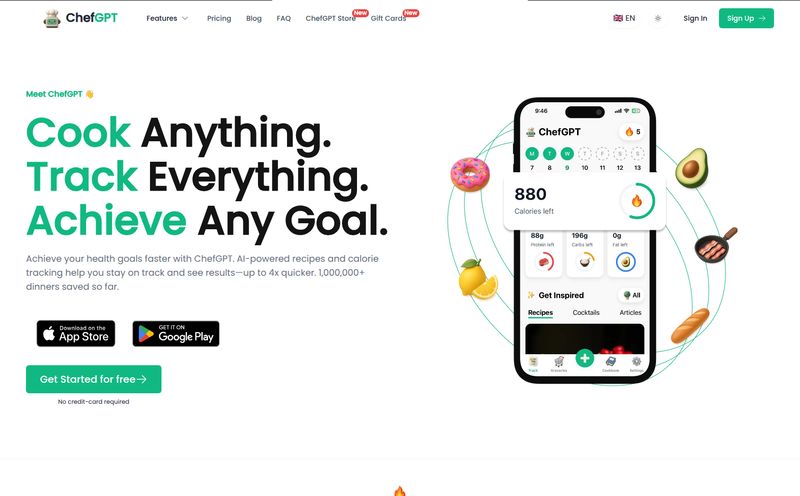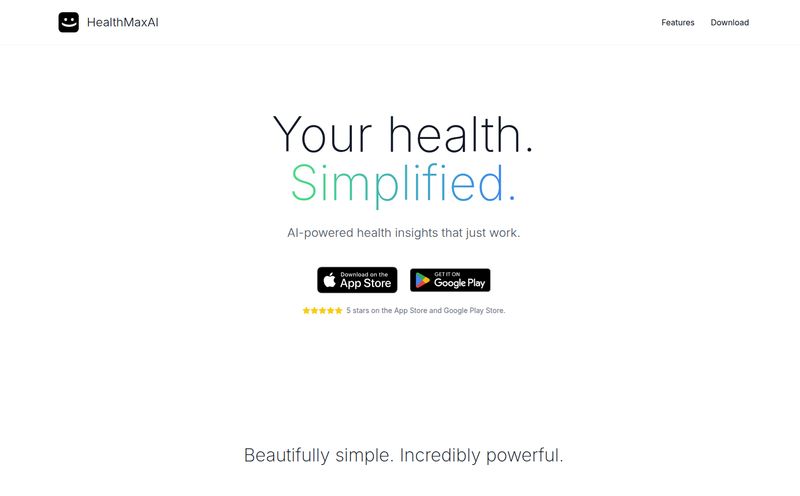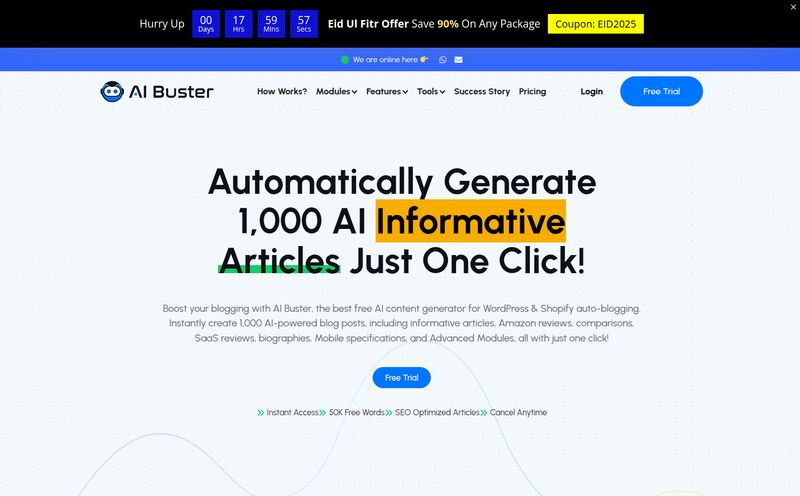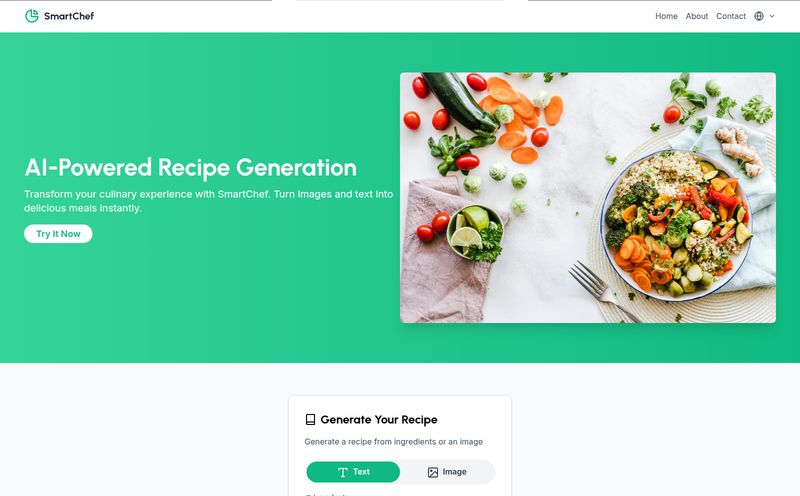If you’ve ever tried to get serious about your health or fitness, you've probably faced the dreaded task of calorie counting. It's a chore. A soul-sucking, joy-draining chore that involves meticulously weighing chicken breasts, squinting at nutrition labels, and endlessly scrolling through databases to find that exact brand of Greek yogurt. I’ve been there. I’ve spent more time logging meals in apps than actually enjoying them. It’s the number one reason most people, myself included, throw in the towel.
So when I heard about a tool called CalorieCounter that promised to do it all with a simple photo, my inner tech geek and my long-suffering diet-self both sat up and paid attention. An AI that just looks at my food and tells me the damage? Sign me up. But as anyone in the tech and SEO world knows, promises and reality are often two very different things. So I took it for a spin. Here’s what I found.

Visit CalorieCounter
So What Exactly Is CalorieCounter?
In a nutshell, CalorieCounter is a PWA (we’ll get to that later) that uses artificial intelligence to streamline health tracking. The main hook, the thing that gets everyone talking, is its photo analysis feature. You snap a picture of your plate, and the AI gets to work, breaking down the estimated calories and protein content. Think of it like Shazam, but for your supper.
But it's not just a one-trick pony. It’s designed to be more of a holistic health companion. It also tracks your exercise, helps you figure out what to cook with the random ingredients in your fridge, and shows you your progress over time to keep you from losing steam. It's an ambitious piece of tech aiming to solve a very human problem: laziness. Or, as I prefer to call it, efficiency.
The Features That Actually Matter
An app can have a million features, but only a few ever really count. Here’s the breakdown of what makes CalorieCounter tick.
The Magic of AI Photo Analysis
This is the star of the show. The ability to just take a picture of your lunch is, frankly, amazing. When it works, it feels like living in the future. I tested it on a few different meals – a simple salad, a more complex pasta dish, and my morning oatmeal. The process is dead simple and it saves a ton of time compared to manual entry. You can even save meals, so if you're a creature of habit like me and eat the same sad desk lunch three times a week, logging it becomes a one-tap affair.
More Than Just a Calorie Estimator
If it only analyzed photos, it'd be a cool gimmick. But the platform ties it all together. The feature they call Snap and Cook is genuinely useful. You tell it you have chicken, broccoli, and some sad-looking carrots, and it spits out recipe recommendations. It’s a great way to fight food waste and the dreaded “what’s for dinner?” paralysis.
And then there's the progress tracking. It gives you daily, weekly, and monthly insights. Seeing those charts and stats can be a huge motivator. For data nerds like me who love seeing trends and traffic reports, seeing a similar breakdown for my own health is incredibly satisfying. It turns the mundane process of dieting into a game you want to win.
Voice Commands for Maximum Convenience
I almost overlooked this, but the voice command functionality is a nice touch. When you're in the middle of meal prep with hands covered in... well, whatever you're cooking, you can just tell the app what you're doing. It’s a small thing, but it shows they're thinking about real-world use cases.
My Experience: The Good, The Bad, and The AI
Okay, so it sounds great on paper. But how does it hold up in the real world? Well, it’s a mixed bag, like any new tech.
The time-saving aspect is undeniable. It easily shaved 10-15 minutes off my day that would've been spent on manual logging. The motivation from seeing the progress reports was also a huge plus. It’s one thing to feel like you’re doing well; it’s another to see the data back it up. That's a powerful feedback loop.
However, let's talk about the elephant in the room: AI accuracy. The analysis is an estimation. For a simple plate of grilled chicken and rice, it was pretty spot-on. But for a complex bowl of ramen with ten different toppings? It’s more of an educated guess. I found myself mentally adding a few calories here and there just to be safe. It’s not a tool for medical-grade precision, but for general population use, it’s probably close enough to be effective. It’s a bit like keyword traffic estimates in SEO tools—a fantastic guide, but not gospel.
My other minor gripe is that it’s a PWA, or Progressive Web App. This means it runs in your browser and you can save it to your homescreen, but it isn’t a native app you download from the App Store or Google Play. For me, this isn’t a big deal at all. In fact, I appreciate not having to download another app. But I know some people prefer the smoother, more integrated feel of a native application. It's a personal preference thing.
Let's Talk Money: The CalorieCounter Price Tag
This is where the rubber meets the road. CalorieCounter isn't free for its best features. To get the good stuff, you're looking at a subscription plan.
| Plan | Price | Features |
|---|---|---|
| Unlimited | $19.95 / month | Unlimited image analysis, text/voice commands, Snap and Cook, meal plans, food swaps, goal changes, and automated progress reports. |
Is it worth it? Honestly, that depends on your pain point. If you value your time and absolutely despise manual logging, then twenty bucks a month to automate that process could be a bargain. Think about it—that’s the cost of a few fancy coffees. If that investment keeps you on track with your health goals, then it’s money well spent. But if you're on a tight budget or don't mind the manual work, a free app might be a better fit.
Who Is This Really For?
So, who should jump on the CalorieCounter train?
I’d say it’s perfect for the busy professional or the tech-enthusiast who loves efficiency and data. If you’ve tried and failed with other apps because of the tedious logging process, this could be the game-changer you need. It’s for people who want a smart, modern tool to support their goals.
Who should maybe skip it? If you require 100% perfect nutritional accuracy for medical reasons, you should probably stick to methods approved by a doctor or registered dietitian. Also, if you’re a staunch believer in native apps and the thought of a PWA makes you shudder, this might not be for you. And of course, the budget-conscious user has plenty of free, albeit more manual, options out there.
Frequently Asked Questions
How accurate is the CalorieCounter AI?
It's pretty good but not perfect. Think of it as a highly educated estimate. It's fantastic for general tracking and awareness, but for complex, multi-ingredient dishes, there's a margin of error. It's best used as a guide, not an infallible scientific instrument.
Is CalorieCounter a free app?
While there might be a free version with limited functionality, the core features that make it so powerful, like unlimited image analysis and automated reports, are part of the paid subscription at $19.95 per month.
What is a PWA and how is it different from a regular app?
A PWA, or Progressive Web App, is essentially a website that behaves like an app. You access it through your phone's browser but can save it to your home screen for quick access. It doesn't require a download from an app store, which saves space on your phone. Native apps are downloaded from stores like the Apple App Store or Google Play and are built specifically for that operating system.
Can CalorieCounter help me with meal ideas?
Yes! That’s what the “Snap and Cook” feature is for. It gives you recipe recommendations based on the ingredients you already have, which is a lifesaver for busy weeknights.
Does it track more than just calories?
Absolutely. The AI analysis also provides a protein estimate, and the platform allows you to track your exercise and overall progress through detailed daily, weekly, and monthly reports.
So, What's the Final Verdict?
I came into this review skeptical but hopeful, and I’m walking away impressed. CalorieCounter isn't perfect, no. The AI has its moments of confusion, and the subscription model will be a hurdle for some. But it represents a significant shift in how we can approach health tracking.
It successfully removes the single biggest point of friction in dieting—the mind-numbing task of manual logging. It makes the process faster, more engaging, and maybe even a little bit fun. For me, that’s a massive win. It’s a glimpse into a future where technology doesn’t just give us data but actively helps us live better. And that’s a trend I’m excited to follow.
Reference and Sources
- CalorieCounter Official Website & Pricing: https://www.caloriecounter.pro



